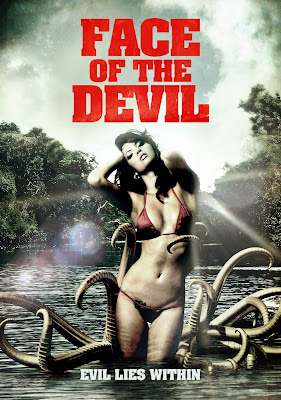Text © Richard
Gary / Indie Horror Films, 2021
Images from
the Internet
On the Trail of UFOs: Dark Sky
Directed by Seth
Breedlove
Small Town
Monsters; 1091 Pictures
85 minutes, 2021
www.smalltownmonsterss.com
They say when you are passionate about something, you don’t have a job. Or something like that. Seth Breedlove and his Small Town Monsters (SMT) company are spearheading a movement on the questionable: Bigfoot, the Momo, and a host of other cryptid creatures. For this documentary, he both goes out of his – er – orbit of “natural” Earth monsters, and looks up at the stars. But from the perspective of being very on the ground.
Over time, Breedlove has gone from films that are mostly documentaries and part re-enactments, to being the point of focus leading the expedition. This makes sense in the world of Covid, keeping it close and personal as much as possible.
Not counting claims of Aliens visiting Ancient Egypt (and helping to build the pyramids? Really?) or Latin America thousands of years ago (if you want a laugh, check out the 1968 book Chariots of the Gods?, by Erick von Damien), UFO sighting claims are actually relatively recent in the United States, dating back to around the Second World War. Though most of the creatures Breedlove has focused on have been around a bit longer than that, the explosion of Alien contact is fully national, rather than isolated segments of the country (for example, as Breedlove’s previous docu showed how the Adirondacks are a focus of detections, rather than, say, Taos, AZ).

Seth Breedlove and Shannon Legro
That being said, Breedlove is joined in this quest by paranormal researcher and author Shannon Legro, who has her own podcast called Into the Fray Radio. She leads the questioning of the people who are claiming sightings. They start off, in this case, in West Virginia, where an older man describes a sighting he had when he was 10 years old. From there, they mostly focus their travels investigating and interviewing around West Virginia with a quick boo northwest into Ohio (STM is based near Akron, OH). I think it is really smart to keep the focus small and concentrate on one relatively small area (i.e., a state) than nationally, or even globally. Especially in these pandemic days.
The film, which is based on a television show by the same name (2020), also wisely manages to bring in some references to the meat of STM concentrations by noting that West Virginia is also the area of the infamous Mothman, and a few interviewed mentions it directly. But there are other weirdness and cryptids mentioned, such as an alien from a crashed UFO, the Green Monster of Flatwoods, WV, which has a museum dedicated to it in that town, and a whole section of the mysterious Men in Black, who may be military, or possibly otherworldly. There are even some paranormal investigators thrown in to help search for information.
Are the Aliens interested in the military which has numerous bases there, power sources of West Virginia such as coal mines, electrical grids and nuclear plants, or the many factories that built them (e.g., Nitroglycerine for TNT came from the WV town of Nitro)? Or perhaps, and for me this is one of the weakest arguments, do they use the coal shafts and caves to travel to a “hollow earth”? It’s all good fun, anyway.
I find it interesting that the crafts all are different shapes. One investigator comments that most are saucer shapes with lights, but the descriptions are numerous, including triangular or other forms. Perhaps they are from different civilizations, or may be built by billionaires on other planets? Okay, the last sentence was totally me. But I mean the first part of that sentence, which I have not seen questioned before.
The film is bolstered by some incredibly well-done animations and re-creations, as well as some possible images of real sightings. There are also various 1950s film clips that I enjoyed, such as ones from Earth vs. the Flying Saucers (1956; thank you, public domain).
Legro, who also presents the television version, is a good host, and she certainly does the job well. On occasion, though, she seems a bit stiff when reading the narration. She is stoic quite a bit, so the parts where she gets excited really liven it up, such as in the last section. I will acknowledge that it is a fine line when interviewing not to take away from the person who is talking, and when dealing with non-professional talkers, this can be challenging; and she does this quite well. Breedlove, who spearheaded the previous On the Trail of Bigfoot (2021, reviewed HERE), wisely takes a back seat to Legro, and lets her get to work, chirping in with his questions just at the right time.
When dealing with the topics of great mysteries like the supernatural, cryptids, and/or Aliens, there are two aspects to keep in mind. The first is whether or not they actually find one in their search. That is certainly one of the reasons why we watch these documentaries. The second is that usually, you know you are going to be left unfulfilled, like this is the appetizer (questions) without an entrée (answers), but the smells are so good in the restaurant (the program) that you just do not care. That is the ultimate goal for both the program and the viewer.
Breedlove’s documentaries that I have seen, and there
have been a few now, have never disappointed, and I always look forward to
them. UFO documentaries are pretty much a dime a dozen, but the way he ties in
the cryptid connections makes this stand out some from the others, and for that
I am grateful.





























